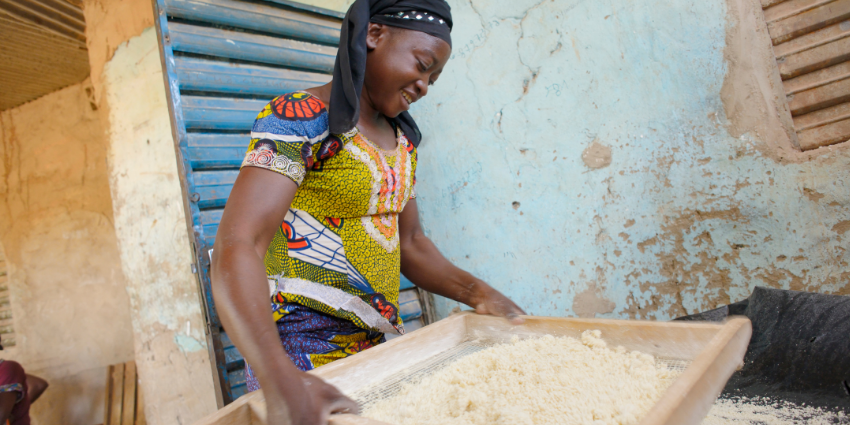African Facility: technical assistance for ACFIME

© Didier Gentilhomme
The African Facility is a mechanism set up in 2013 by the Grameen Crédit Agricole Foundation, in partnership with theFrench Development Agency (AFD), to support rural microfinance institutions in sub-Saharan Africa.
This system, which ends at the end of 2021, will have enabled 326 technical assistance missions to be carried out with 26 microfinance institutions for a total amount of €3.52 million in subsidies.
A look back at the program with an interview with Gaston Assagwe, Director General of theACFIME.
ACFIME (Community Agency for Micro-Enterprise Financing) is a Tier 3 microfinance institution (credit portfolio < 10 million USD) based in Burkina Faso. As of the end of December 2020, the institution served 21,504 clients with an outstanding loan of €1.9 million. It offers credit and savings products to a primarily female clientele (90%) and living primarily in rural areas (90%).
As part of the African Facility technical assistance program, consultant Pierre Houssou supported the institution in developing a risk map adapted to its challenges and its development strategy.
Why was developing a risk map important for ACFIME?
A microfinance institution founded in 2007, ACFIME has expanded its activities nationally with three branches and seven service points. From its inception, it established an internal audit department to ensure control of the institution's operations and anticipate risks. As part of the African Facility, the institution was assisted by consultant Pierre Houssou in developing a risk map. Today, periodic monitoring of the map allows for monitoring the evolution of each risk and rapid action to be taken to correct them.
What did you expect from the consultant? Did the results meet your expectations?
How to identify a risk, how to analyze it, how to measure its importance in a sustainable and viable way for the institution? Thanks to this mission, the internal audit department was first trained on the concept of risks and how to develop a risk mitigation plan. Since risks can be found in every position and every procedure or process, everyone's collaboration was essential to achieve the mission's second objective: the development of a risk map. The participatory approach used by Pierre Houssou (individual questions and answers, focus groups, votes, plenary sessions, etc.) allowed each ACFIME member to be an active participant in this major work of reflection and analysis.
What could have been the avenues for improving this mission?
The duration of the mission could undoubtedly have been extended. But the outcome was very positive, and at the end of the mission, a risk management committee was established within ACFIME to independently update the risk mapping. We now have a precise risk mapping system tailored to financial, operational, and strategic risks, as well as effective management tools. The annual internal audit plan is also based on this risk mapping to help ACFIME evolve.
How did this mapping help you better manage risks during the Covid-19 crisis?
Since the implementation of this mapping, the identified risks have been the subject of a mitigation plan, the implementation of which has helped prevent and reduce existing risks. In the context of the Covid-19 crisis, the mapping helped ACFIME quickly turn to local financial partners, such as the Burkinabe government, to cope with the drying up of international funding, due to travel restrictions and health restrictions on a global scale.



Leave a Reply
Want to join the discussion?Feel free to contribute!